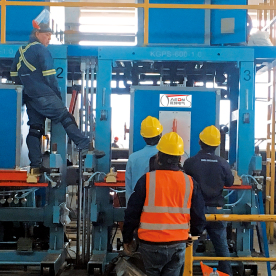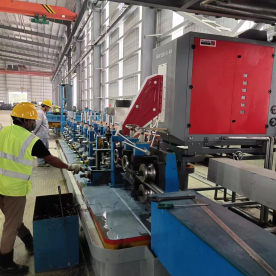Annealing is a crucial heat treatment process used to alter the physical and sometimes chemical properties of a material. It involves heating a material to a specific temperature, maintaining that temperature for a certain period, and then gradually cooling it down. This process is mainly employed to reduce hardness, increase ductility, and relieve internal stresses. Annealing machine applications in industry span a wide range of sectors, including metallurgy, electronics, glass, and even plastics. This article delves into the various applications of annealing machines across different industries, revealing their importance in optimizing material performance.
1. Metallurgy
In the metallurgy industry, annealing machines are utilized extensively in the production and processing of metals. Steel, for example, undergoes annealing to improve its ductility and toughness. Different grades of steel are subjected to specific heating and cooling cycles to achieve desired mechanical properties. This process is particularly critical in the production of components for automotive, aerospace, and construction industries, where strength and durability are paramount.
Annealing machines in metallurgy are categorized primarily into batch and continuous types. Batch annealers are used for small-scale operations and specialty materials, while continuous annealers are favorable for high-volume production, such as with wire, strips, and sheets. The design of these machines can vary, with either controlled atmospheres to prevent oxidation or traditional air cooling methods.
2. Electronics
In the electronics industry, annealing plays a fundamental role in processing semiconductor materials. Silicon wafers, for instance, undergo procedural heating and cooling to repair damage from ion implantation and to activate dopants. Advanced annealing techniques, including rapid thermal annealing (RTA) and laser annealing, are employed to achieve the required electrical properties without altering the physical structure of the wafers.
Annealing machines designed for the electronics industry often prioritize speed and precision. The efficiency of these machines directly influences the overall performance of electronic devices. As technology continues to evolve, the demand for more sophisticated annealing systems has prompted innovations such as automated temperature controls and real-time monitoring to ensure quality.
3. Glass Industry

Exploring the Diverse Annealing Machine Applications in Industry: Enhancing Material Properties for Optimal Performance
The glass manufacturing industry also employs annealing machines to enhance the durability and aesthetic qualities of glass products. After manufacturing, glass is typically subjected to a process known as “annealing” to relieve internal stresses that may have formed during production. This is particularly vital for glassware and architectural glass, where uneven stress can lead to breakage.
The annealing process in glass is conducted in large furnaces known as annealing lehr. Here, glass items are gradually cooled to room temperature, ensuring even distribution of heat and reducing the risk of breakage. The speed of cooling and the temperature profile are critical factors that must be carefully controlled to avoid defects.
4. Plastics and Composites

Exploring the Diverse Annealing Machine Applications in Industry: Enhancing Material Properties for Optimal Performance

Exploring the Diverse Annealing Machine Applications in Industry: Enhancing Material Properties for Optimal Performance
In the growing field of plastics and composites, annealing machines are also becoming essential. Annealing can enhance the dimensional stability and mechanical properties of thermoplastic materials. This is especially useful in the production of parts that require a high degree of precision, such as those used in the automotive and aerospace sectors.
Another critical application is in the production of composite materials. Annealing helps align the molecular chains in the composite, improving performance characteristics such as strength and thermal stability. As industries shift towards more sustainable alternatives, the role of annealing machines in processing bioplastics and recycled materials will likely expand.
Conclusion
The applications of annealing machines in industry are vast and varied. From metallurgy to electronics, glass, and plastics, the importance of optimizing material properties through the annealing process cannot be overstated. As industries continue to demand materials with enhanced performance characteristics, the evolution of annealing technology will play a pivotal role in achieving these goals. The integration of automation, real-time monitoring, and advanced control systems in annealing machines will further enhance their efficiency and effectiveness, proving indispensable in the future landscape of manufacturing and material science.
In summary, understanding the critical role of annealing machine applications in industry is essential for engineers, manufacturers, and stakeholders to maintain a competitive edge in their respective fields.Customized ERW tube mill solutions


